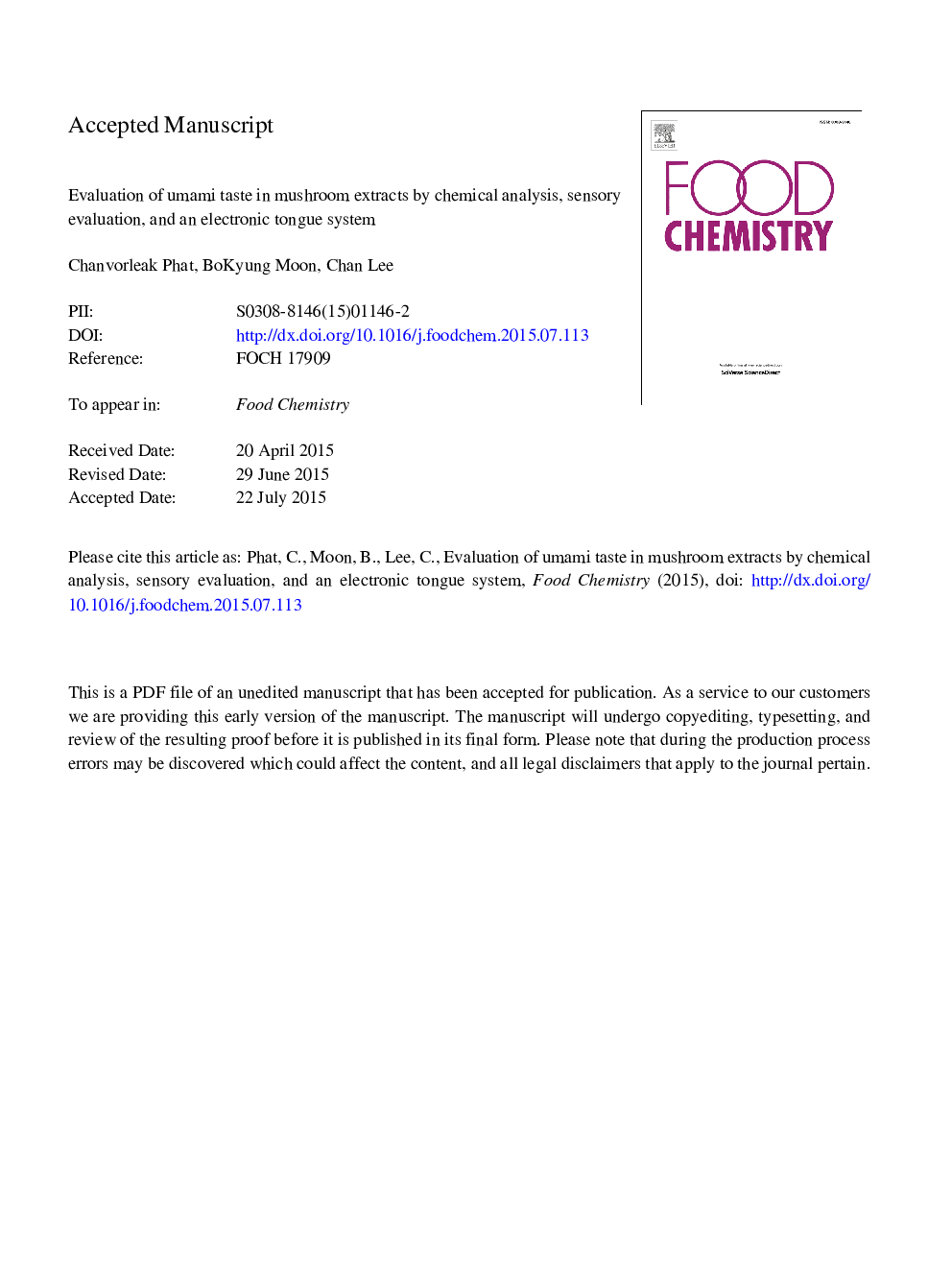| Article ID | Journal | Published Year | Pages | File Type |
|---|---|---|---|---|
| 7590763 | Food Chemistry | 2016 | 35 Pages |
Abstract
Seventeen edible mushrooms commercially available in Korea were analysed for their umami taste compounds (5â²-nucleotides: AMP, GMP, IMP, UMP, XMP; free amino acids: aspartic, glutamic acid) and subjected to human sensory evaluation and electronic tongue measurements. Amanita virgineoides featured the highest total 5â²-nucleotide content (36.9 ± 1.50 mg/g), while monosodium glutamate-like components (42.4 ± 6.90 mg/g) were highest in Agaricus bisporus. The equivalent umami concentration (EUC) ranged from 1.51 ± 0.42 to 3890 ± 833 mg MSG/g dry weight; most mushrooms exhibited a high umami taste. Pleurotus ostreatus scored the highest in the human sensory evaluation, while Flammulina velutipes obtained the maximum score in the electronic tongue measurement. The EUC and the sensory score from the electronic tongue test were highly correlated, and also showed significant correlation with the human sensory evaluation score. These results suggest that the electronic tongue is suitable to determine the characteristic umami taste of mushrooms.
Related Topics
Physical Sciences and Engineering
Chemistry
Analytical Chemistry
Authors
Chanvorleak Phat, BoKyung Moon, Chan Lee,
